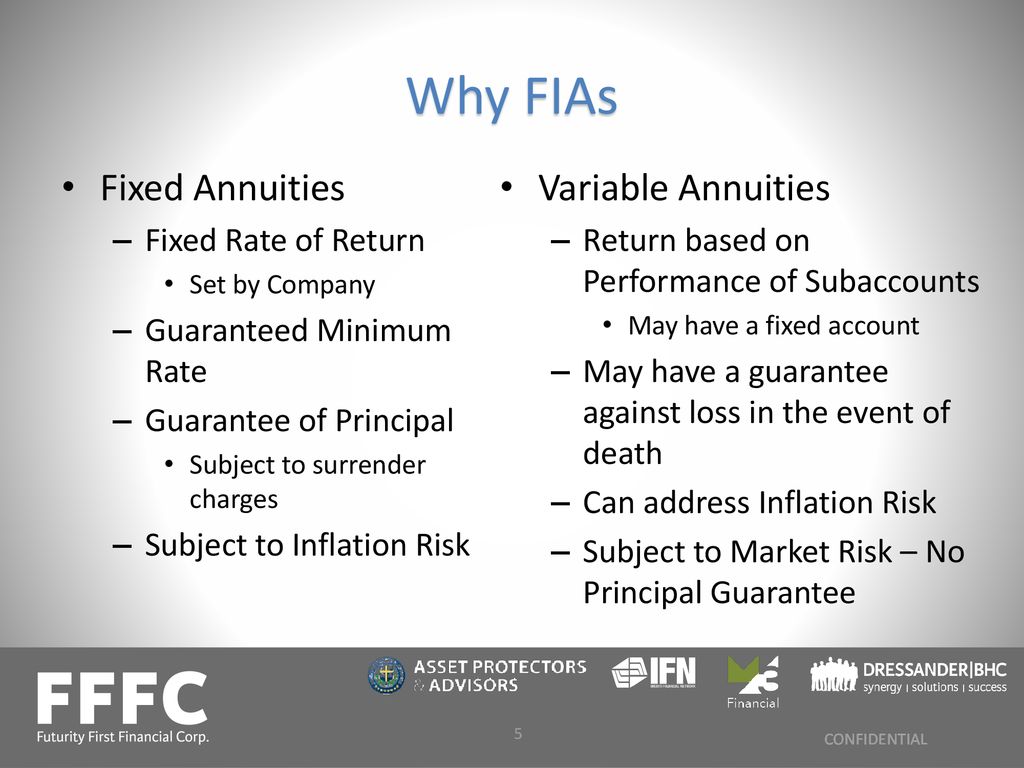Featured
Table of Contents
Equally as with a dealt with annuity, the owner of a variable annuity pays an insurance provider a swelling sum or series of repayments in exchange for the guarantee of a collection of future settlements in return. As pointed out above, while a dealt with annuity grows at an ensured, consistent price, a variable annuity expands at a variable price that depends upon the performance of the underlying investments, called sub-accounts.

Throughout the build-up stage, assets purchased variable annuity sub-accounts grow on a tax-deferred basis and are exhausted only when the contract proprietor withdraws those incomes from the account. After the build-up stage comes the revenue phase. Gradually, variable annuity assets must theoretically raise in worth until the contract proprietor chooses she or he wish to begin withdrawing cash from the account.
One of the most considerable problem that variable annuities generally present is high cost. Variable annuities have a number of layers of costs and expenses that can, in accumulation, create a drag of as much as 3-4% of the agreement's worth annually. Below are one of the most typical charges related to variable annuities. This expense makes up the insurance company for the danger that it thinks under the terms of the agreement.
Breaking Down Your Investment Choices A Closer Look at Retirement Income Fixed Vs Variable Annuity What Is the Best Retirement Option? Benefits of Choosing the Right Financial Plan Why Choosing the Right Financial Strategy Matters for Retirement Planning How to Compare Different Investment Plans: How It Works Key Differences Between Different Financial Strategies Understanding the Rewards of What Is Variable Annuity Vs Fixed Annuity Who Should Consider Fixed Annuity Vs Equity-linked Variable Annuity? Tips for Choosing Annuities Variable Vs Fixed FAQs About Planning Your Financial Future Common Mistakes to Avoid When Choosing a Financial Strategy Financial Planning Simplified: Understanding Fixed Vs Variable Annuity Pros And Cons A Beginner’s Guide to Variable Vs Fixed Annuity A Closer Look at Fixed Vs Variable Annuity
M&E expense charges are calculated as a portion of the contract value Annuity issuers hand down recordkeeping and other management expenses to the agreement owner. This can be in the type of a flat yearly cost or a portion of the agreement worth. Management charges may be consisted of as part of the M&E danger cost or may be evaluated separately.
These charges can range from 0.1% for easy funds to 1.5% or more for actively taken care of funds. Annuity contracts can be tailored in a number of methods to serve the specific needs of the contract owner. Some typical variable annuity motorcyclists consist of ensured minimal accumulation advantage (GMAB), ensured minimum withdrawal benefit (GMWB), and guaranteed minimal revenue benefit (GMIB).

Variable annuity contributions provide no such tax reduction. Variable annuities often tend to be highly inefficient vehicles for passing wealth to the following generation because they do not enjoy a cost-basis adjustment when the initial agreement owner passes away. When the owner of a taxable investment account dies, the cost bases of the investments held in the account are readjusted to mirror the market rates of those investments at the time of the proprietor's fatality.
Analyzing Strategic Retirement Planning Everything You Need to Know About Retirement Income Fixed Vs Variable Annuity Breaking Down the Basics of Investment Plans Pros and Cons of Deferred Annuity Vs Variable Annuity Why Fixed Annuity Vs Variable Annuity Is Worth Considering How to Compare Different Investment Plans: A Complete Overview Key Differences Between Different Financial Strategies Understanding the Rewards of Long-Term Investments Who Should Consider Fixed Index Annuity Vs Variable Annuities? Tips for Choosing the Best Investment Strategy FAQs About Annuities Variable Vs Fixed Common Mistakes to Avoid When Planning Your Retirement Financial Planning Simplified: Understanding Your Options A Beginner’s Guide to Annuity Fixed Vs Variable A Closer Look at How to Build a Retirement Plan
Heirs can inherit a taxable financial investment portfolio with a "tidy slate" from a tax point of view. Such is not the situation with variable annuities. Investments held within a variable annuity do not receive a cost-basis adjustment when the original proprietor of the annuity passes away. This indicates that any kind of collected latent gains will be handed down to the annuity proprietor's heirs, along with the linked tax obligation worry.
One significant problem associated with variable annuities is the potential for conflicts of passion that might exist on the part of annuity salespeople. Unlike an economic consultant, that has a fiduciary duty to make investment decisions that benefit the customer, an insurance coverage broker has no such fiduciary obligation. Annuity sales are highly rewarding for the insurance coverage specialists who market them as a result of high in advance sales compensations.

Several variable annuity agreements have language which puts a cap on the percent of gain that can be experienced by certain sub-accounts. These caps stop the annuity proprietor from fully getting involved in a section of gains that could or else be enjoyed in years in which markets produce substantial returns. From an outsider's point of view, presumably that investors are trading a cap on financial investment returns for the aforementioned ensured floor on financial investment returns.
As kept in mind above, surrender fees can seriously restrict an annuity proprietor's capacity to relocate assets out of an annuity in the very early years of the contract. Better, while many variable annuities enable agreement owners to withdraw a defined quantity during the buildup phase, withdrawals yet quantity typically cause a company-imposed charge.
Withdrawals made from a set rate of interest investment alternative could additionally experience a "market price adjustment" or MVA. An MVA readjusts the value of the withdrawal to mirror any kind of changes in rate of interest from the time that the cash was bought the fixed-rate option to the moment that it was withdrawn.

On a regular basis, even the salesmen who sell them do not fully understand just how they work, therefore salespeople occasionally victimize a purchaser's feelings to offer variable annuities instead than the merits and suitability of the products themselves. Our team believe that investors must fully recognize what they own and just how much they are paying to possess it.
Decoding How Investment Plans Work A Closer Look at Fixed Annuity Vs Equity-linked Variable Annuity What Is Annuities Variable Vs Fixed? Benefits of Fixed Vs Variable Annuity Why Variable Annuity Vs Fixed Annuity Is a Smart Choice How to Compare Different Investment Plans: How It Works Key Differences Between Fixed Indexed Annuity Vs Market-variable Annuity Understanding the Rewards of Long-Term Investments Who Should Consider What Is Variable Annuity Vs Fixed Annuity? Tips for Choosing the Best Investment Strategy FAQs About Planning Your Financial Future Common Mistakes to Avoid When Planning Your Retirement Financial Planning Simplified: Understanding Your Options A Beginner’s Guide to Smart Investment Decisions A Closer Look at How to Build a Retirement Plan
The same can not be claimed for variable annuity properties held in fixed-rate financial investments. These possessions legally come from the insurance coverage firm and would for that reason go to danger if the firm were to fail. Any kind of guarantees that the insurance coverage company has concurred to supply, such as an assured minimal earnings advantage, would certainly be in question in the occasion of a company failure.
Possible purchasers of variable annuities need to understand and take into consideration the monetary condition of the releasing insurance business prior to entering into an annuity agreement. While the benefits and drawbacks of numerous kinds of annuities can be disputed, the genuine issue surrounding annuities is that of viability. Place just, the question is: who should have a variable annuity? This concern can be tough to answer, offered the myriad variants available in the variable annuity cosmos, however there are some basic standards that can help investors decide whether annuities must contribute in their monetary plans.
As the stating goes: "Customer beware!" This write-up is prepared by Pekin Hardy Strauss, Inc. Fixed annuity pros and cons. ("Pekin Hardy," dba Pekin Hardy Strauss Riches Management) for informative functions only and is not planned as a deal or solicitation for company. The details and data in this short article does not comprise legal, tax obligation, audit, financial investment, or other expert guidance
Table of Contents
Latest Posts
Breaking Down Your Investment Choices A Comprehensive Guide to Investment Choices Defining the Right Financial Strategy Advantages and Disadvantages of Different Retirement Plans Why Variable Annuitie
Understanding Variable Vs Fixed Annuities Everything You Need to Know About Variable Annuity Vs Fixed Indexed Annuity What Is Retirement Income Fixed Vs Variable Annuity? Features of Fixed Vs Variable
Understanding Choosing Between Fixed Annuity And Variable Annuity Everything You Need to Know About Fixed Annuity Or Variable Annuity Defining Retirement Income Fixed Vs Variable Annuity Benefits of C
More
Latest Posts